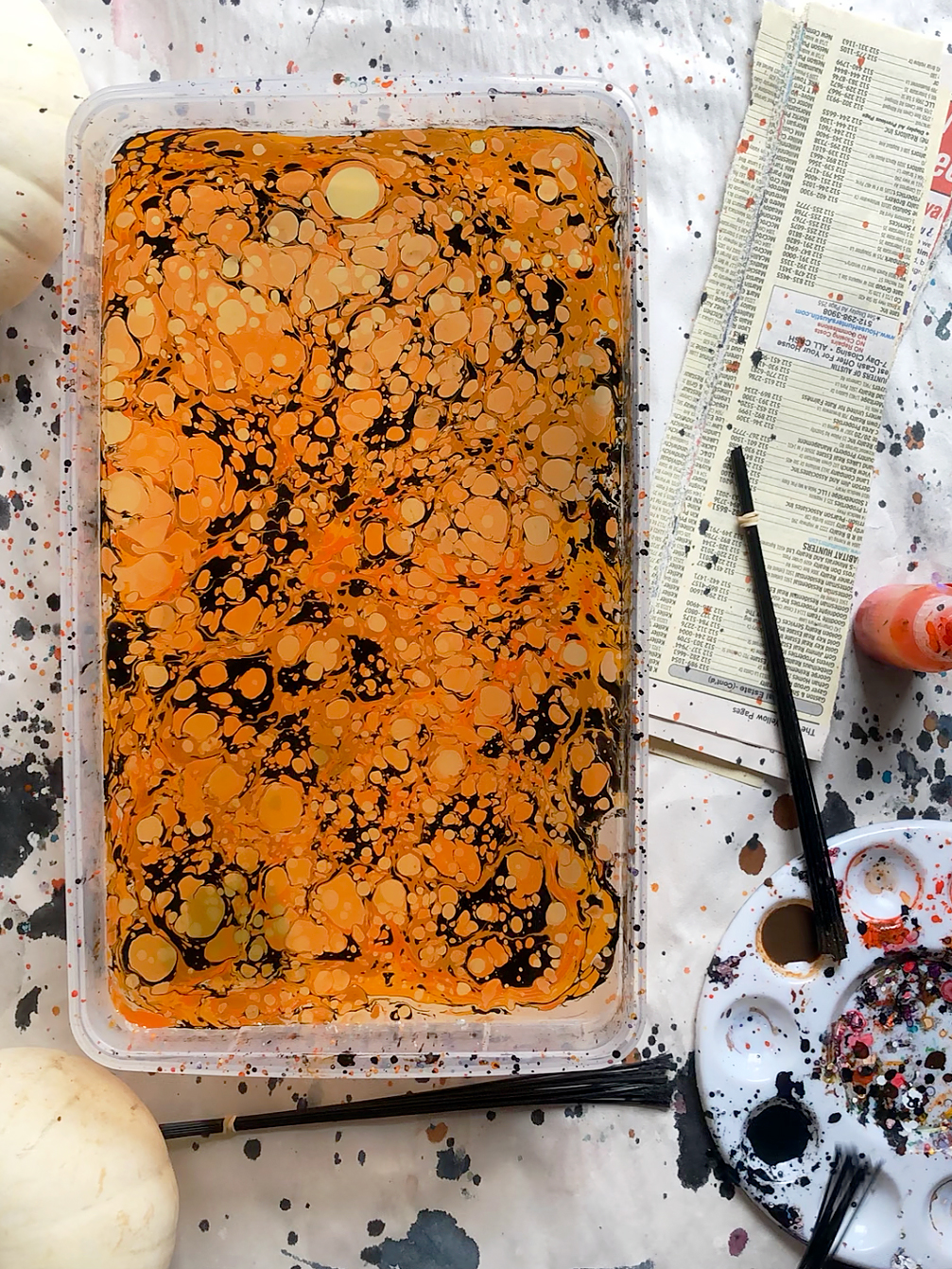We may earn revenue from the products available on this page and participate in affiliate programs.
Sophisticated marbling swirls through all of Mercedez Rex’s work—though the artist typically marbles 2-D materials like paper and silk to create everything from custom wrapping paper to scarves and pillowcases. As the weather has started to get cooler, though, Rex has been feeling festive. Always ready to experiment, she decided to marble pumpkins. But not just any run-of-the-mill gourds. She used miniature white ones, as the light color shows off paint better, she explained in an Instagram post.
A marble master, Rex walked Domino through how to achieve the swirled, whimsical look of these Halloween decorations from start to finish. Don’t be intimidated by unfamiliar supplies like powdered carrageenan (it’s a seaweed extract that thickens water): The process is easier than you’d expect.
The Supplies
- Pumpkins (miniatures are easiest to handle)
- Sandpaper
- A container deep enough to submerge the pumpkins fully
- Acrylic paint
- Droppers
- Water
- Paintbrushes or skewers (for swirling)
- Powdered carrageenan (readily available on Amazon)
Step 1: Sand
Pumpkins naturally have a thin, waxy coating on their surface. While good for the gourd, this top layer will repel the paint you want it to adhere to. Take a quick pass with sandpaper until the surface is no longer supershiny. By sanding down that skin, you not only get rid of any lingering dirt, you also make sure the acrylics won’t just slide off.
Step 2: Prep the Dipping Mixtures

After you’ve prepped the pumpkins you want to marble, it’s time to mix the paint. Standard acrylic paint will work just fine if it’s watered down a little: Rex recommends equal parts paint and water. Mix as many colors as you plan to use for your assortment of pumpkins.
Then make the starch solution. For the desired consistency, use 4 teaspoons of powdered carrageenan for every gallon of water and blend using an electric mixer. The powder will thicken the water, allowing the paint to float on the surface.
Step 3: Swirl
Once the carrageenan water is in the tub of your choosing (Rex uses plastic storage bins), it’s time for the fun part. Using droppers, start adding the paint mixture, color by color, into the container. In order to achieve the signature marbling look, use a skewer or the handle of a paintbrush to swirl through the drops of paint, creating patterns as you go. Be careful not to overdo the swirling or all the colors will mix too much, becoming murky.
Step 4: Dip

Holding the first pumpkin by its stem, slowly and steadily submerge the entire gourd into the tub. No waiting is needed; you can immediately lift the pumpkin back out and set it on a flat surface to dry. A wire cooling rack works best; layer paper underneath to catch any dripping paint.
Step 5: Rinse and Repeat
Repeat the process with all your pumpkins. If you’re using the same set of colors on each one, there’s no need to clear the surface of the thickened water in between. If you plan on switching it up, remove the layer of paint by dragging a paper towel across the surface of the water to pick up any leftover pigments.
Get creative: Try different combinations of colors or patterns, or follow Rex’s lead and add faces atop the marbling with drops of white paint. Arrange the finished pumpkins on your front steps or mantel, or use them as part of your next autumnal tablescape for a twist (literally) on a fall favorite.
